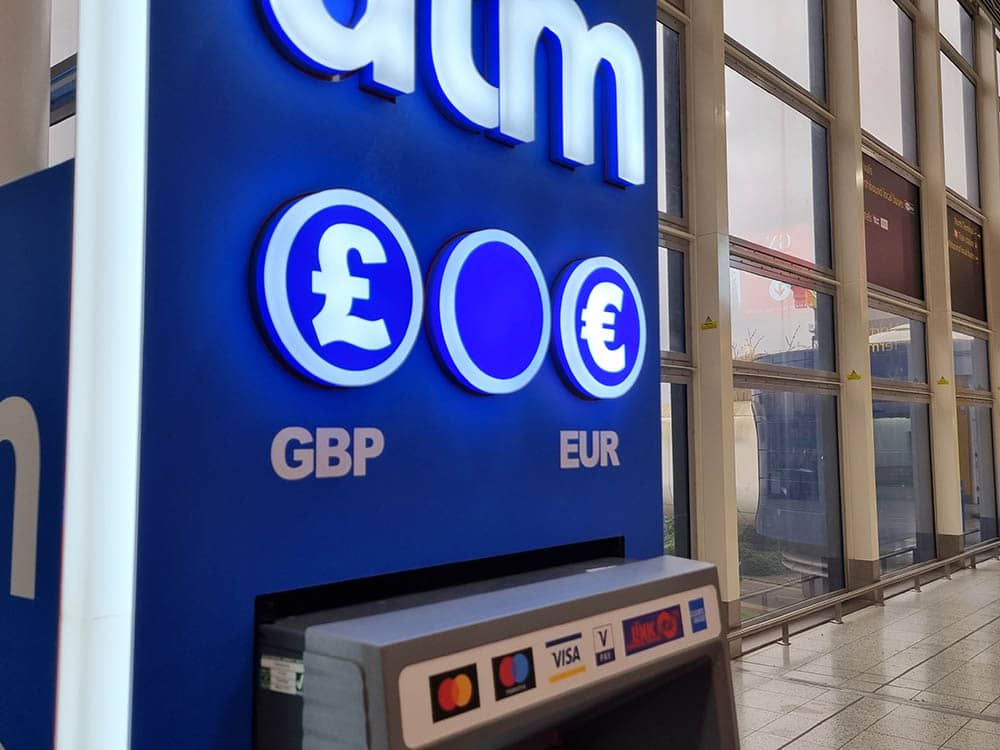GBP/EUR Week Ahead Forecast: Knocking on the 200-Week MA
- Written by: Gary Howes
-
- GBP/EUR looking better supported
- 200-week moving average forms main technical roadblock
- Stock market rally key to ongoing GBP advance
- As market anxieties over UK finances fade
- Key data event is UK and Eurozone PMIs

Image © Pound Sterling Live
Don't expect fireworks from the Pound to Euro exchange rate (GBP/EUR) over the coming days but do expect this pair to be better supported if global investor sentiment remains constructive and UK PMI data outshine those of the Eurozone.
Pound Sterling enters the new week supported by an ongoing recovery in global stock markets and a positive investor response to last Thursday's Autumn Statement where the government committed to ensuring the nation's finances remain on a stable footing over coming years.
For financial markets, boring is better.
"In the short term, there seems to be a sense of relief following the recent carnage we saw in UK assets. So long as risk appetite is there, GBP should be supported," says Thanim Islam, Head of FX Analysis at Equals Money. "For most of November, GBPEUR has been trading sideways in a 1.5% range. Could relief over the Autumn statement be enough for GBPEUR to break to the upside?"
From a technical perspective, analyst George Vessey at Western Union Business Solutions says the GBP/EUR exchange rate looks set to test a key resistance level over the coming days.
"The 200-week simple moving average (SMA) of the GBP/EUR exchange rate is currently located at €1.1505 and is acting as short-term resistance level," says Vessey.
Overcoming this level opens the door to further advances, but failure means further frustration for those looking for a stronger Pound.
"The charts lack a definitive bias, but... a close above the 200-week SMA would be bullish," says Vessey.
Above: GBP/EUR at weekly intervals showing the location of the 200-week moving average.
"Moving averages are considered key indicators by traders and market analysts for identifying trends. The indicators appear as lines on a chart and meander higher and lower along with the price moves in whatever instrument that is being charted," explains Vessey.
"In this case, we're specifically monitoring the price action around the 200-week moving average. Back during the height of the pandemic, GBP/EUR tumbled below its 200-week SMA and remained below for 12 months, before breaking above it in early 2021 and steadily climbing 7% higher over the next 12 months," he adds.
This rally saw GBP/EUR eventually hit a post-Brexit trading high just shy of 1.22 in March of this year before reversing course towards its 200-week SMA, which broke below in September.
For five weeks straight the Pound faltered at this key moving average, but a close above it could accelerate the recent climb higher, says Vessey.
(If you are looking to protect or boost your international payment budget you could consider securing today's rate for use in the future, or set an order for your ideal rate when it is achieved, more information can be found here.)
Above: GBP/EUR at daily intervals. Friday's strong advance improves the immediate technical picture. To better time your payment requirements, consider setting a free FX rate alert here.
Looking at the data calendar, the highlight for both the Euro and Pound this week is the release of the Purchasing Manager Index surveys for November on Wednesday, which will give the first glimpse of how the Eurozone and UK economies are performing.
"A couple of PMI releases are due (this) week — important given the UK’s deteriorating growth outlook — and are likely to disappoint," says Thomas Flury, Strategist at UBS Switzerland AG. "We see weaknesses in the UK economy that would limit any upside for the pound."
The S&P Global/CIPS Manufacturing PMI for November is forecast to read at 45.6 when released at 09:30 GMT, down from October's 46.2. The Services PMI is forecast at 48, down from October's 48.8, the Composite PMI is expected to read at 47.5, down from October's 48.2.
Therefore all readings are expected to be consistent with an economic contraction in November.
Should the data beat expectations the Pound could find itself bid higher, but an undershoot would have the opposite impact.
"GBP remains stuck between a rock and a hard place as it awaits further evidence on how severe the recession has so far been across the UK economy. In that respect, Wednesday’s flash PMIs for November could offer more up-to-date indications on how much momentum UK activity has already lost," says Valentin Marinov, Head of G10 FX Strategy at Crédit Agricole.
The Eurozone's PMI data are released half an hour earlier than the UK releases: the manufacturing PMI is expected to read at 46.0, down from October's 46.4.
The Services PMI is forecast at 48.1, down from October's 48.6, the Composite PMI is expected at 47.0, down from 47.3.
"How will the European Central Bank (ECB) and markets react to another drop in flash purchasing managers' (PMIs)? That is the challenge next week," says Thomas Flury, Strategist at UBS Switzerland AG.
"We are positive on the euro in the long term, but we see considerable risk of a setback in the coming weeks," says Flury.
"We see growing downside risks for EUR/USD from current levels ahead of the Eurozone November PMIs," says Valentin Marinov, Head of G10 FX Strategy at Crédit Agricole.
But the ultimate driver of the Pound could well be broader investor sentiment, which has been supportive of late.
Markets rallied sharply after the release of October's U.S. inflation data on November 10 which suggested the peak in inflation was at hand.
This led markets to bet that the Federal Reserve could soon consider slowing down its rate hiking cycle with a view to delivering a final hike in early 2023.
Rising Fed interest rates have increased the cost of funding not just in the U.S., but around the world, over recent months. This has hit global economic growth prospects and 'high beta' cyclical currencies such as the Pound which rely on positive investor sentiment.
Therefore, a turn in Fed hike expectations is supportive of global growth, investor sentiment, stock markets and currencies such as the Pound.
Analysts say that while the Fed will inevitably slow down its rate hiking cycle the road ahead will be bumpy and bouts of risk aversion are likely.
"An unexpected slowdown in US inflation boosted risk sentiment and hurt the USD. But we think markets went too far too soon, as conditions are not right yet for a sustained drop in the dollar," says Thomas Flury, Strategist at UBS Switzerland AG.







